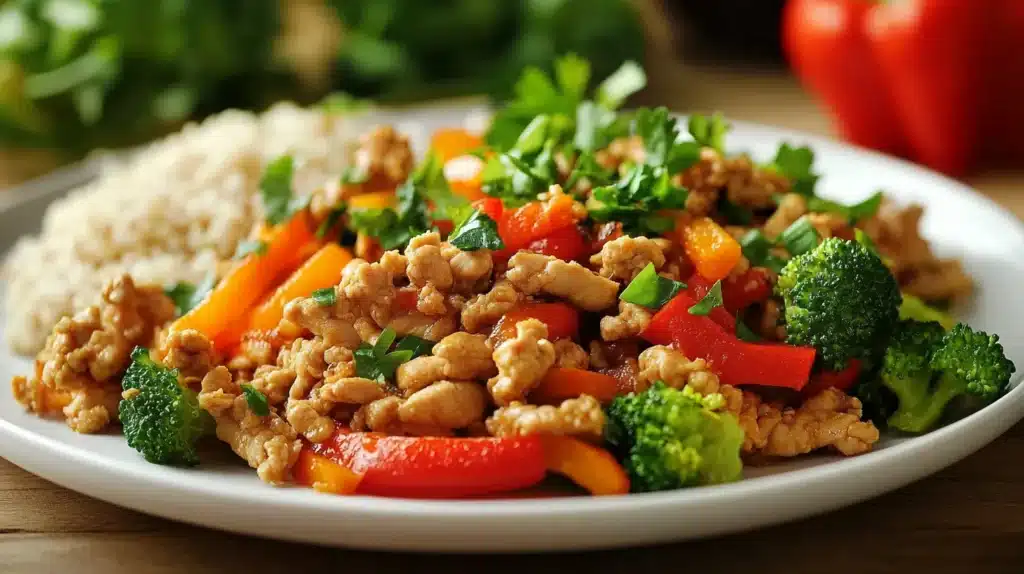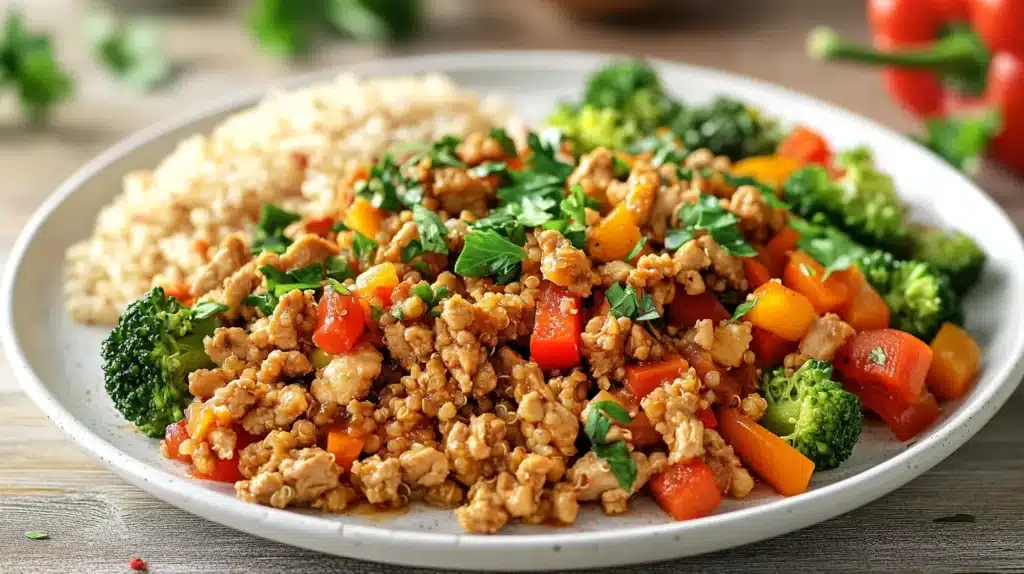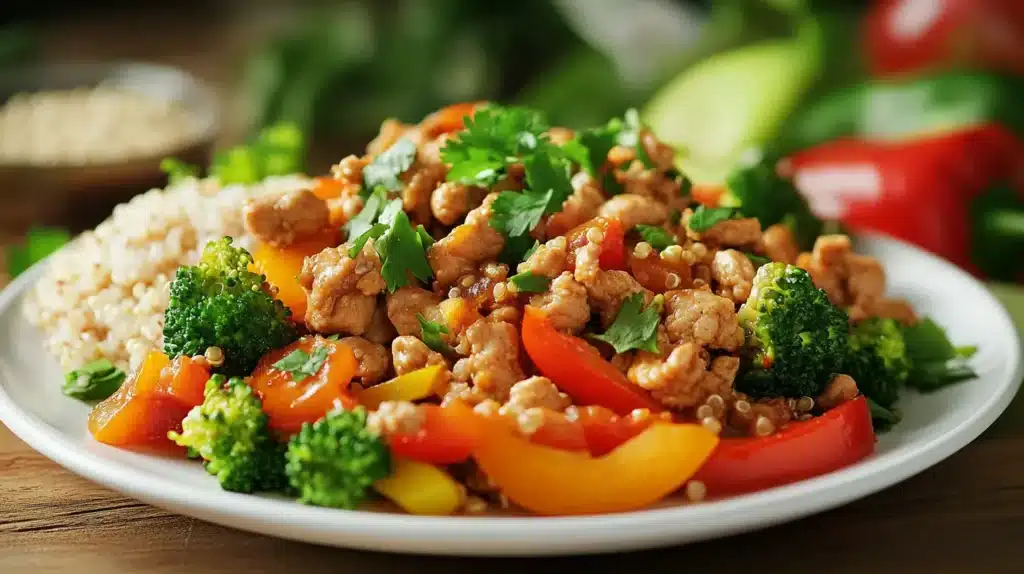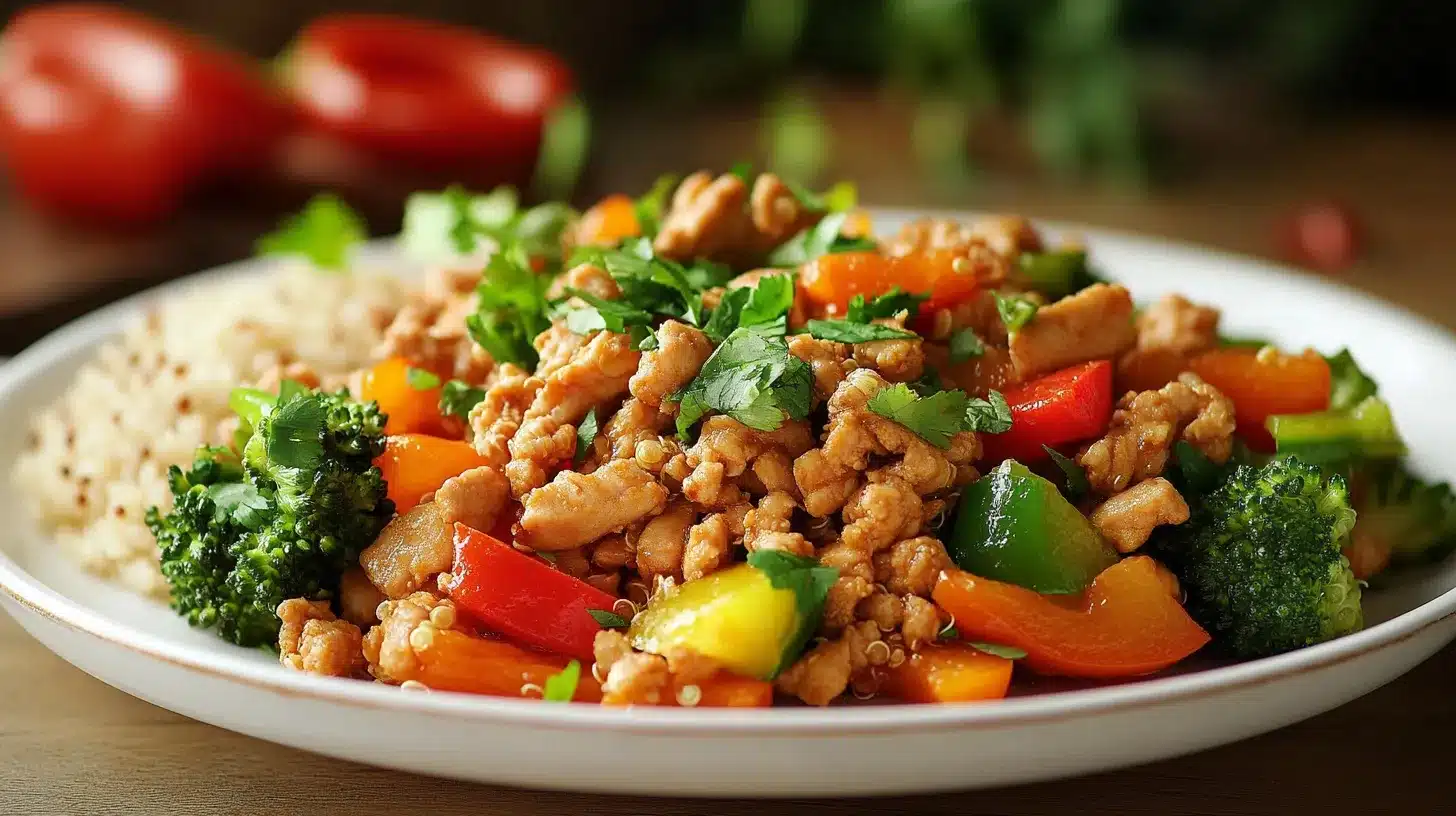Chicken Mince Healthy – is it really a nutritious choice? Also known as ground chicken, this lean protein has become a kitchen staple due to its versatility and lighter flavor. Whether you’re preparing a quick stir-fry, juicy meatballs, or a healthy alternative to beef burgers, chicken mince offers a balanced option. In this guide, we explore its nutritional profile, benefits, and comparisons with other minced meats. Plus, get tips on selecting, cooking, and incorporating chicken mince into your diet for a healthier lifestyle.

Table of Contents
Understanding Chicken Mince
Chicken mince is made by grinding both white and dark meat from a chicken. Sometimes, a small amount of skin is included to enhance texture and flavor. It is widely praised for its lower fat content compared to red meats, making it a popular choice among health-conscious individuals.
For more detailed nutritional data, the USDA FoodData Central offers comprehensive information on various meats, including chicken mince.
Nutritional Composition of Chicken Mince
A 100-gram serving of chicken mince typically contains:
- Calories: 143 kcal
- Protein: 19 grams
- Fat: 7.7 grams (mostly unsaturated fats)
- Carbohydrates: 0 grams
It’s also rich in essential micronutrients like:
- Vitamin B6: Supports brain health and metabolism.
- Vitamin B12: Vital for nerve function and red blood cell production.
- Iron: Promotes oxygen transport in the blood.
- Zinc: Enhances immune function and wound healing.
According to the Harvard T.H. Chan School of Public Health, consuming lean protein sources like chicken can contribute to better heart health and muscle development.
Chicken mince healthy option for protein and nutrition
Here are the key reasons why incorporating chicken mince into your diet can be beneficial:
- High Protein Content
Protein is essential for building and repairing muscles. With 19 grams of protein per 100 grams, chicken mince serves as a reliable source of this vital nutrient. - Lower Fat Levels
Chicken mince contains significantly less saturated fat than red meats like beef or lamb. This makes it a heart-healthy option, particularly for those managing cholesterol levels. - Rich in Vitamins and Minerals
The presence of Vitamin B6, Vitamin B12, iron, and zinc ensures that chicken mince contributes to energy production, immunity, and overall well-being. - Weight Management
Due to its high protein and low-fat content, chicken mince can keep you full for longer, helping you maintain a calorie deficit if weight loss is your goal.
Potential Health Concerns
While chicken mince offers numerous benefits, there are a few considerations:
- Bacterial Risks: Like all poultry, chicken mince may carry bacteria such as Salmonella or Campylobacter. Always cook it to an internal temperature of 165°F (74°C).
- Processed Options: Some commercially available ground chicken may contain additives or high sodium levels. Always read labels carefully.
- Dietary Restrictions: Ensure that no allergens or additives are present if you have specific dietary needs.
Comparison with Other Minced Meats
How does chicken mince stack up against other options? Here’s a quick comparison:
- Beef Mince: While richer in flavor, it contains higher saturated fats and cholesterol.
- Pork Mince: Similar to beef, it has more saturated fats but can be leaner depending on the cut.
- Plant-Based Mince: Often fortified with nutrients, it caters to vegetarians but may contain added sugars or processed ingredients.
Choosing chicken mince as your primary option strikes a balance between nutrition and versatility.
For creative ideas, check out this recipe guide on 10 Healthy Chicken Mince Recipes for Quick Dinners.

How to Select Quality Chicken Mince
To maximize the health benefits, consider the following tips:
- Choose Fresh: Look for mince that’s pink in color and free from a strong odor.
- Opt for Lean: Select products labeled “lean” or “extra lean” to reduce fat content.
- Go Organic or Free-Range: These options are often free from hormones and antibiotics, offering a cleaner product.
How to Cook Chicken Mince Healthy for Maximum Nutrition
The way you prepare chicken mince can significantly affect its nutritional value. Here are some tips:
- Grill or Bake: These methods minimize the need for extra oil, keeping calorie counts low.
- Incorporate Vegetables: Adding vegetables like spinach, carrots, or bell peppers boosts fiber and micronutrient content.
- Use Healthy Spices: Replace salt with herbs like oregano, thyme, or garlic for flavor without the sodium.
Need inspiration? Try this recipe for Chicken Mince Stir-Fry with Vegetables to keep your meals exciting and healthy.
Delicious Chicken Mince Recipes
Here are three recipes you can try:
- Chicken Mince Lettuce Wraps
A low-carb, high-protein option perfect for quick lunches. - Baked Chicken Mince Meatballs
Pair these with whole-grain pasta or zoodles for a balanced meal. - Chicken Mince Curry
A flavorful dish rich in spices and low in added fats.
FAQs About Chicken Mince
1. Is Chicken Mince Good for Health?
Yes, chicken mince is a healthy option, especially when made from lean cuts. It is high in protein, low in saturated fat, and contains essential vitamins and minerals like B6, B12, iron, and zinc. It supports muscle growth, immune function, and heart health. However, the healthiness depends on how it is prepared—opting for grilled or baked versions over fried ones is best.
2. What Is the Healthiest Type of Mince?
The healthiest type of mince depends on fat content and nutrition. Here’s a comparison:
- Chicken Mince – Lean, high in protein, and lower in saturated fats than beef or pork.
- Turkey Mince – Slightly leaner than chicken mince, making it a great heart-healthy option.
- Beef Mince (Lean or Extra Lean) – Rich in iron and B vitamins, but higher in saturated fat.
- Plant-Based Mince – Good fiber source but may contain additives or processed ingredients.
The healthiest choice is lean chicken or turkey mince, preferably organic or free-range to avoid antibiotics and hormones.
3. Is Chicken Mince Processed Food?
Plain, fresh chicken mince is not considered processed food, as it is simply ground chicken. However, pre-packaged or flavored chicken mince may contain additives like preservatives, excess sodium, or artificial flavorings, making it more processed. Always check ingredient labels and opt for fresh, organic, or homemade chicken mince for the healthiest choice.
4. Is Minced Chicken Healthy for Weight Loss?
Yes! Chicken mince is excellent for weight loss because it is:
✅ High in protein – Keeps you full longer, reducing overall calorie intake.
✅ Lower in fat – Compared to beef or pork, it has fewer calories.
✅ Versatile – Can be used in stir-fries, salads, and soups without unhealthy additives.
To maximize weight loss benefits, choose lean chicken mince, cook it using grilling, baking, or steaming methods, and pair it with vegetables and whole grains instead of refined carbs.

Conclusion
Incorporating chicken mince into your diet can be a smart choice, offering a lean, nutrient-dense source of protein. By choosing high-quality products and cooking them healthily, you can enjoy a variety of dishes while reaping numerous health benefits. Be sure to pair it with fresh vegetables and whole grains to create balanced, nutritious meals.
For more inspiration, explore The Role of Protein in Weight Management and discover how to make your diet healthier today!
